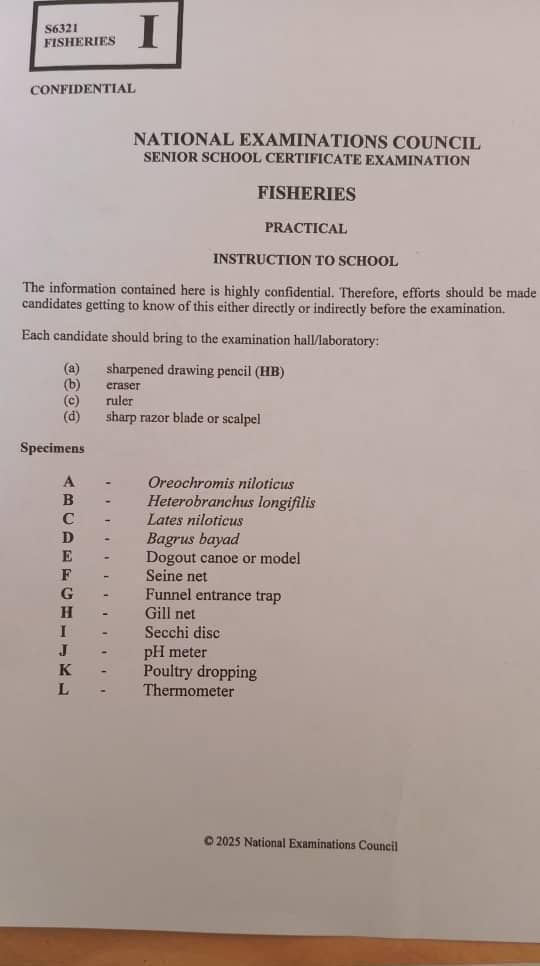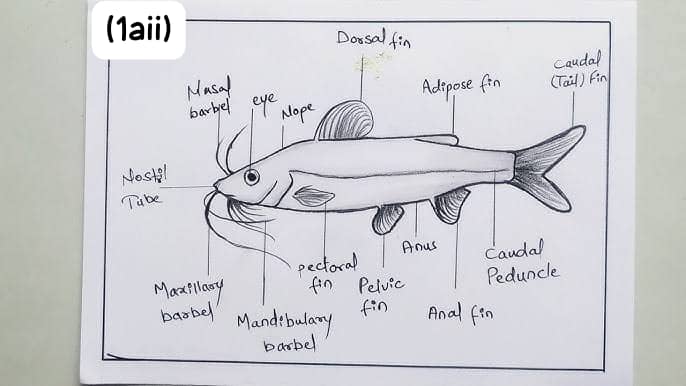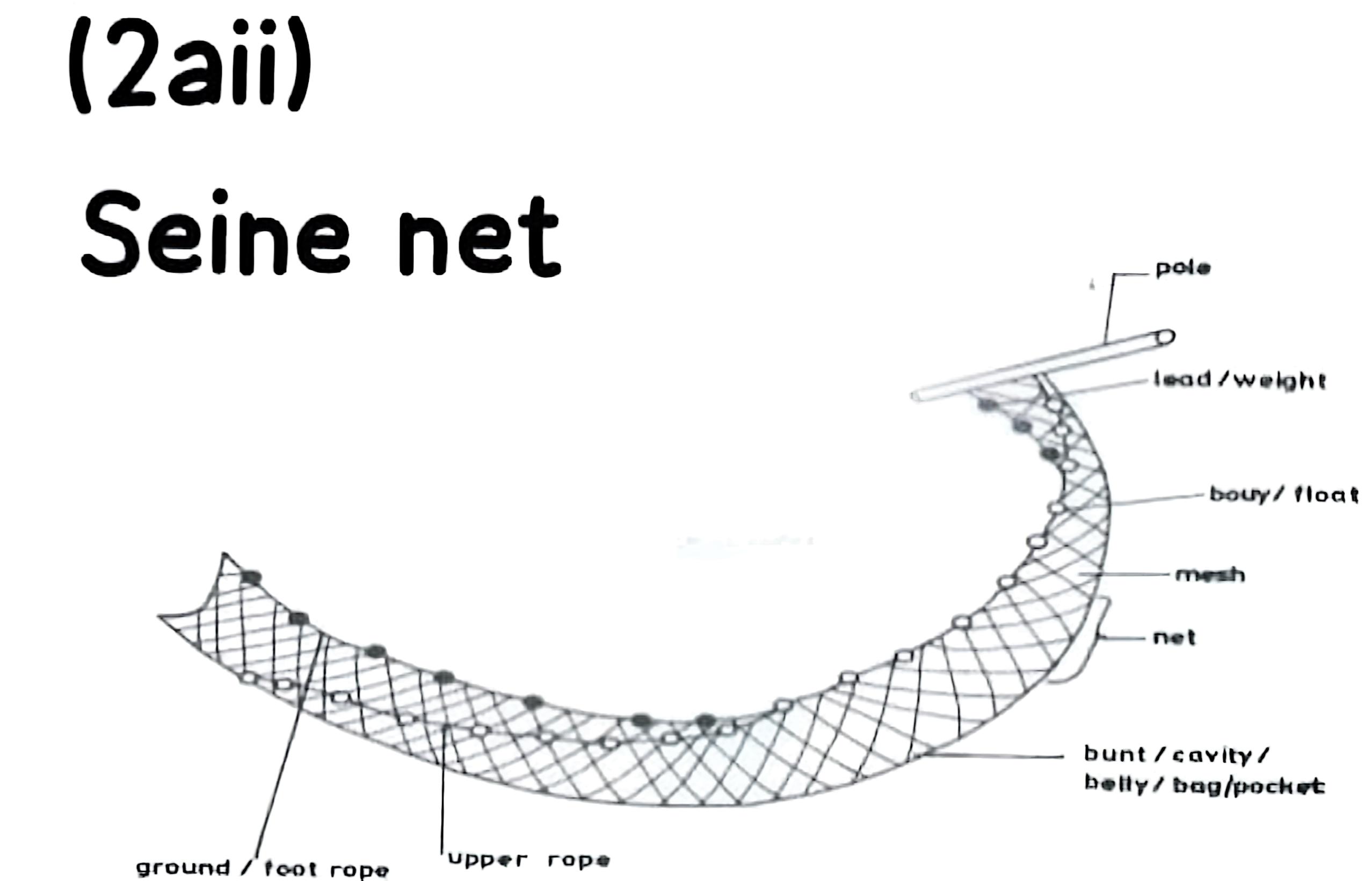The NECO Fisheries Practical is one of the most interesting and important parts of the Senior School Certificate Examination for students studying Fisheries. It is not just about reading textbooks, this practical test checks how well you understand the real tools, fish species, and equipment used in fishing and aquaculture.
For the 2025 NECO exam, the official list of practical specimens has been released. It contains a mix of fish samples like Oreochromis niloticus, Heterobranchus longifilis, and Bagrus bayad, as well as important fishing tools like the gill net, seine net, funnel trap, and scientific instruments like the pH meter and Secchi disc.
If you want to pass your NECO Fisheries Practical with ease, pay attention as we break everything down in a simple and easy to understand way.
NECO Fisheries Practical Specimens 2025
The National Examinations Council (NECO) has officially released the Fisheries Practical Specimens for the 2025 SSCE exam. This list includes various fish species, fishing gear, and water testing tools. Every candidate is expected to study and understand these specimens before the exam.
Here is the complete list of the NECO Fisheries Practical Specimens for 2025:
| Specimen | Name |
|---|---|
| A | Oreochromis niloticus |
| B | Heterobranchus longifilis |
| C | Lates niloticus |
| D | Bagrus bayad |
| E | Dogout canoe or model |
| F | Seine net |
| G | Funnel entrance trap |
| H | Gill net |
| I | Secchi disc |
| J | pH meter |
| K | Poultry dropping |
| L | Thermometer |

NECO Fisheries Practical Questions And Answers 2025
Question 1: Fish Identification and Features
(1ai)
Name the specimens labeled A, B, C, and D.
(1aii)
Draw and label any one of the specimens from A–D.
(1aiii)
In a tabular form, state two distinguishing features each for:
Specimen A (Oreochromis niloticus)
Specimen D (Bagrus bayad)
(1bi)
In a tabular form, state the following features for each of specimens A, B, C, and D:
Type of mouth shape
Shape of caudal fin
(1bii)
State the family to which each of the following specimens belongs:
(i) A
(ii) B
(iii) C
(iv) D
NUMBER ONE ANSWERS
(1ai)
A: Oreochromis niloticus
B: Heterobranchus longifilis
C: Lates niloticus
D – Bagrus bayad
(1aii)
draw the diagram

(1aiii)
In a tabular form
A:
(PICK ANY TWO)
(i) It has no barbels around the mouth.
(ii) The body is laterally compressed and deep.
(iii) The caudal fin is rounded or slightly forked.
(iv) It is herbivorous, feeding mostly on algae and plant matter.
(v) It belongs to the family Cichlidae.
D:
(PICK ANY TWO)
(i) It has well-developed barbels around the mouth.
(ii) The body is elongated and cylindrical.
(iii) The caudal fin is deeply forked.
(iv) It is carnivorous, feeding on smaller fish and aquatic organisms.
(v) It belongs to the family Bagridae.
(1bi)
In a tabular form
=Specimen A=
(i) Type of mouth shape: Terminal mouth (mouth opens at the tip of the head).
(ii) Shape of caudal fin: Rounded or slightly forked caudal fin.
=Specimen B=
(i) Type of mouth shape: Sub-terminal or inferior mouth (mouth located below the snout).
(ii) Shape of caudal fin: Rounded caudal fin.
=Specimen C=
(i) Type of mouth shape: Large terminal mouth (opens at the front and is wide).
(ii) Shape of caudal fin: Deeply forked caudal fin.
Specimen D – Bagrus bayad
(i) Type of mouth shape: Sub-terminal or inferior mouth.
(ii) Shape of caudal fin: Forked caudal fin.
(1bii)
(i) A: Cichlidae
(ii) B: Clariidae
(iii) C: Centropomidae (or Latidae)
(iv) D: Bagridae
=======================
Question 2: Fishing Equipment and Their Uses
(2ai)
Identify specimens E, F, G, and H.
(2aii)
Draw and label specimen F
(2aiii)
State three similarities between Seine Net (Specimen F) and Gill Net (Specimen H).
(2bi)
List one major use of:
(i) Specimen E (Dugout canoe)
(ii) Specimen G (Funnel entrance trap)
(2bii)
State two maintenance practices for Specimen G (Funnel entrance trap).
(2biii)
List two materials used in constructing:
(i) Specimen E (Dugout canoe)
(ii) Specimen H (Gill net)
NUMBER TWOTWO ANSWERS
(2ai)
E: Dugout canoe (or model)
F: Seine net
G: Funnel entrance trap
H: Gill net
(2aii)
drw the diagram

(2aiii)
(PICK ANY THREE)
(i) Both are fishing gears used in capturing fish.
(ii) Both are made from netting materials like nylon or synthetic fibers.
(iii) Both are operated in water bodies such as rivers, lakes, or ponds.
(iv) Both have floats attached to keep the upper part buoyant.
(v) Both use lead sinkers to keep the lower edge submerged.
(vi) Both allow the capture of multiple fish at once.
(vii) Both can be used manually by fishermen without engines or machines.
(2bi)
E:
(PICK ANY ONE)
(i) It is used for transporting fishermen to and from fishing grounds.
(ii) It is used to carry fishing gear such as nets and traps.
(iii) It helps in monitoring and harvesting from fish enclosures.
(iv) It is used during fish rescue operations in ponds or flooded areas.
(v) It facilitates access to deeper parts of a water body for fishing.
G:
(PICK ANY ONE)
(i) It is used to passively catch fish or crustaceans.
(ii) It traps aquatic animals that swim in through the narrow funnel.
(iii) It reduces stress on captured fish compared to active gears.
(iv) It is ideal for selective fishing with bait.
(v) It is used in both freshwater and brackish water environments.
(2bii)
(PICK ANY TWO)
(i) Clean the trap regularly to remove debris and mud.
(ii) Dry properly after use to prevent rust or rot.
(iii) Store in a dry, shaded place when not in use.
(iv) Inspect regularly for damage or wear and repair as needed.
(v) Apply protective coating (e.g., anti-rust or paint) if made of metal.
(vi) Avoid dragging the trap over rough surfaces to prevent breakage.
(2biii)
E:
(PICK ANY TWO)
(i) Wood
(ii) Nails or metal fasteners
(iii) Paint or varnish
(iv) Rope
(v) Iron sheets (for reinforcement)
(vi) Tar or resin (for sealing cracks)
H:
(PICK ANY TWO)
(i) Nylon thread
(ii) Cork floats
(iii) Lead sinkers
(iv) Twine or rope
(v) Mesh netting
(vi) Plastic or metal rings (for edge support)
=======================
Question 3: Water Quality Tools and Pond Management
(3ai)
Identify specimens I, J, K, and L.
(3aii)
Draw and label any one of the water monitoring tools from 3ai.
(3aiii)
State three precautions to follow when using a pH meter (Specimen J).
(3bi)
State three ways poultry droppings (Specimen K) are useful in fish farming.
(3bii)
List two other organic materials that can be used in place of poultry droppings.
(3biii)
State two precautions when using a thermometer (Specimen L).
(3biv)
State one handling precaution each for:
(i) Secchi disc (Specimen I)
(ii) pH meter (Specimen J)
NUMBER THREE ANSWERS
(3ai)
I: Secchi disc
J: pH meter
K: Poultry dropping
L: Thermometer
(3aii)
check the image below
(3aiii)
(PICK ANY THREE)
(i) Calibrate the pH meter regularly using standard buffer solutions.
(ii) Rinse the electrode with distilled water before and after each use.
(iii) Store the electrode in appropriate storage solution when not in use.
(iv) Avoid touching the electrode bulb with fingers to prevent contamination.
(v) Keep the pH meter away from direct sunlight or high temperatures.
(vi) Replace the electrode when it becomes faulty or gives unstable readings.
(vii) Turn off the meter after use to conserve battery life and prevent damage.
(3bi)
(PICK ANY THREE)
(i) Acts as organic fertilizer to promote plankton growth in ponds.
(ii) Enhances natural fish food availability through increased primary productivity.
(iii) Reduces the cost of purchasing commercial fish feed.
(iv) Improves the nutrient content of the pond bottom soil.
(v) Encourages faster growth of fish by providing protein-rich microorganisms.
(vi) Boosts the overall fertility of the pond ecosystem.
(vii) Increases fish yield due to improved food supply and pond conditions.
(3bii)
(i) Cow dung
(ii) Pig manure
(3biii)
(i) Handle with care to avoid breakage.
(ii) Do not use in boiling water to prevent damage.
(iii) Clean after use to avoid contamination between measurements.
(3biv)
I:
(i) Avoid taking readings on windy or rainy days to ensure accuracy.
(ii) Lower the disc vertically and slowly into the water for correct measurement.
J:
(i) Do not immerse the pH meter above the maximum immersion level.
(ii) Rinse the electrode with distilled water before and after use to prevent contamination.
===================
ALSO READ:
NECO Animal Husbandry Practical Specimens 2025
NECO Agricultural Science Practical Specimens 2025
Conclusion
The NECO Fisheries Practical exam is not something to fear. With proper preparation, understanding of the specimens, and a little confidence, you can pass this paper with flying colours.
Now that you have all this information, the next step is to revise regularly and practice what you have learned. You don’t need to memorize everything word for word, just understand the key ideas and be able to explain them in your own words.
If this post helped you, kindly:
- Share it with your classmates or school WhatsApp group
- Bookmark this page for revision
- Visit NairaEdu.com for more NECO updates and school resources
From all of us at NairaEdu, we wish you success in your NECO Fisheries Practical 2025!

Mr. Femi is an education blogger who simplifies exam updates and study tips for Nigerian students. His goal is to make learning smart, easy, and rewarding.

1 thought on “NECO Fisheries Practical Specimens 2025”